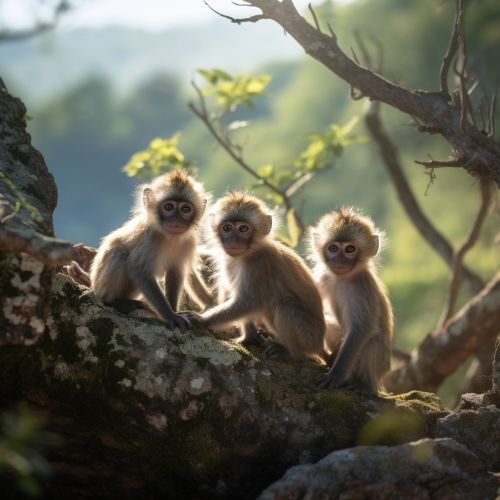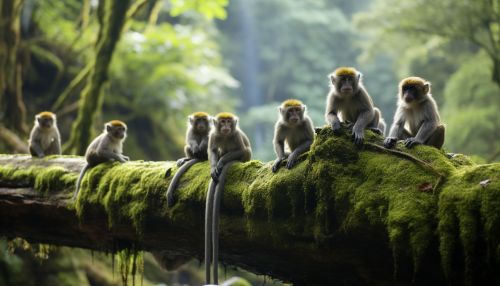New World Monkeys
Taxonomy and Evolution
New World monkeys, scientifically known as Platyrrhines, are a group of primates that are native to the tropical regions of Central and South America. They are one of the three major divisions of primates, the other two being prosimians and Old World monkeys. The term "New World" is used to distinguish these monkeys from their Old World counterparts, which are found in Africa and Asia.
New World monkeys are believed to have diverged from the Old World monkeys about 40 million years ago. This divergence is thought to have occurred when a group of primates migrated from Africa to South America, a continent that was isolated from the rest of the world at that time. This isolation allowed the primates to evolve independently, leading to the diverse range of species that we see today.


Physical Characteristics
New World monkeys are characterized by a number of unique physical features. One of the most distinctive characteristics is their flat noses, a feature that is reflected in their scientific name, Platyrrhini, which means "flat-nosed" in Greek. This is in contrast to the Old World monkeys, which have narrow, downward-pointing noses.
Another key characteristic of New World monkeys is their prehensile tails. These tails, which are capable of grasping and holding objects, are used as a fifth limb and play a crucial role in the monkeys' arboreal lifestyle. Not all New World monkeys have prehensile tails, but those that do, such as the spider monkeys and howler monkeys, are able to perform remarkable feats of agility in the treetops.
New World monkeys also tend to be smaller than their Old World counterparts, with the smallest species, the pygmy marmoset, weighing just over 100 grams. The largest species, the muriqui, can weigh up to 12 kilograms.
Behavior and Ecology
New World monkeys are primarily arboreal, spending most of their lives in the treetops of the tropical rainforests. They are diurnal, meaning they are active during the day and sleep at night.
These monkeys exhibit a wide range of social structures. Some species, such as the titi monkeys, are monogamous and live in small family groups. Others, like the spider monkeys, live in large, complex societies with a clear hierarchy.
New World monkeys are also known for their vocalizations, which are used for communication and to establish territory. The howler monkeys are particularly famous for their loud, distinctive calls, which can be heard up to 5 kilometers away.
Conservation Status
Many species of New World monkeys are threatened by habitat loss due to deforestation and hunting. The IUCN lists several species as endangered or critically endangered. Conservation efforts are underway to protect these species and their habitats.
